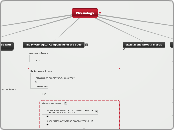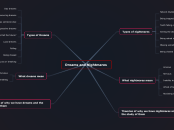A model for mechatronics design with embedded micro-controllers
Manuel Harfuch Díaz Barriga
Embedded micro-controllers inside the mechatronics system model
Feedback mechanisms
Filters
Sequential Circuits
Flip-Flops
PID's
Coordination Tasks
carried on by
micro-controllers
PC's
Micro-Controllers
Microprocessors
Communication protocols
Sequence control
In charge of processes and exchange information
Tasks type 2
carried on by
micro-controllers
Amplifiers
Logic Gates
Triac's
Sensors
Drivers
Motors
Chains
Bands
Gears
Tasks type 1
PCB's
IC
Assemble Structures
Aesthetic elements
Boards
Structure of the Mechatronics System
Systems
Group of equipments that
interact to each other
Equipment
Group of machines that
interact to each other
Machines
Group of mechanism that
interact to each other
Mechanisms
Group of elements base that
interact that interact to each other
Base Elements
Screws, nuts, gear, cables,
resistances, capacitors, transistors, etc
Examples
Teleoperated hand
13° of freedom
Servo controlled
A micro-controller makes
coordination tasks
Communicates with sensor glove
by serial port
Four-legged robot
Two micro-controllers
One has the algorithm and other the control
Twelve motors
High Speed Serial Communication
Explorer
Explorer Robot with IR sensor
4 wheels
Coordination among different taks
AGV
Automated Guided Vehicle
Electronic Differential
Two motors
Forklift
Automated guided vehicle
3 motors
Programmed by PC
Mechatronics System Processes
Dynamic
While operating the MS parts interact
dynamically with each other
Showing equifinality
Systems can reach same final
state regardless the initial conditions
and by different ways, in other words
MS are flexible and adapt.
Tending to disorder
The physical systems tend to disorder,
the MS must correct or stop the process
of disorganization to conserve order and
control during its life
Tending to stability
Tendency of the system to stabilize
in ortder to preserve order and control
Codifying the information
Systems react to specific signals
Static
Is when the MS has a
steady state behaviour or
is in dynamic equilibrium
Transformation
Mass, Energy and Information
should turn to products, services,
results, information, etc.
Means
Coordination tasks
How different tasks communicate
and interact with subsystems
Secondary tasks
System elements concentrate
their energy to execute
primary tasks
Primary tasks
Primary regulations or
fundamental tasks
Directedness
Static teleology
The enviorment, limit, input and output.
Everything outside the MS limit
is the enviorment and for preserving
order and control the MS should be
connected with it.
The Enviorment must provide inputs,
accept outputs and provide feedback
to the MS, therefore this interactions
MS-Enviorment is fundamental.
Outputs
Product, Services, Information,etc
Inputs
Information
Energy
Mass
Limit
Psychological
Appearance and operating way
Social
Ergonomic characteristics
Temporary
Operating time and expected life
Physical
Material and structural
Mechatronics
Develop intelligent
products and processes
Synergistic Combination
Information Technologies
Electronic Control
Mechanical Engineering









